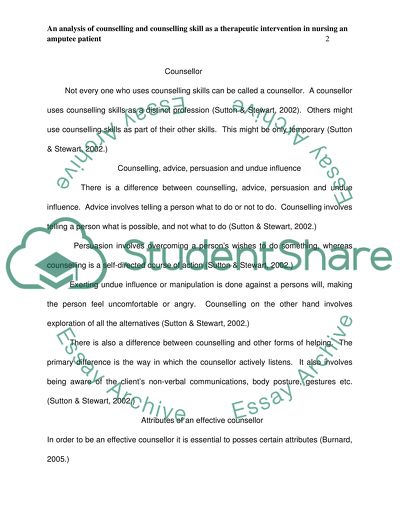Cite this document
(“An analysis of counselling and counselling skill as a therapeutic Essay - 1”, n.d.)
An analysis of counselling and counselling skill as a therapeutic Essay - 1. Retrieved from https://studentshare.org/miscellaneous/1538424-an-analysis-of-counselling-and-counselling-skill-as-a-therapeutic-intervention-in-nursing-an-amputee-patient
An analysis of counselling and counselling skill as a therapeutic Essay - 1. Retrieved from https://studentshare.org/miscellaneous/1538424-an-analysis-of-counselling-and-counselling-skill-as-a-therapeutic-intervention-in-nursing-an-amputee-patient
(An Analysis of Counselling and Counselling Skill As a Therapeutic Essay - 1)
An Analysis of Counselling and Counselling Skill As a Therapeutic Essay - 1. https://studentshare.org/miscellaneous/1538424-an-analysis-of-counselling-and-counselling-skill-as-a-therapeutic-intervention-in-nursing-an-amputee-patient.
An Analysis of Counselling and Counselling Skill As a Therapeutic Essay - 1. https://studentshare.org/miscellaneous/1538424-an-analysis-of-counselling-and-counselling-skill-as-a-therapeutic-intervention-in-nursing-an-amputee-patient.
“An Analysis of Counselling and Counselling Skill As a Therapeutic Essay - 1”, n.d. https://studentshare.org/miscellaneous/1538424-an-analysis-of-counselling-and-counselling-skill-as-a-therapeutic-intervention-in-nursing-an-amputee-patient.


